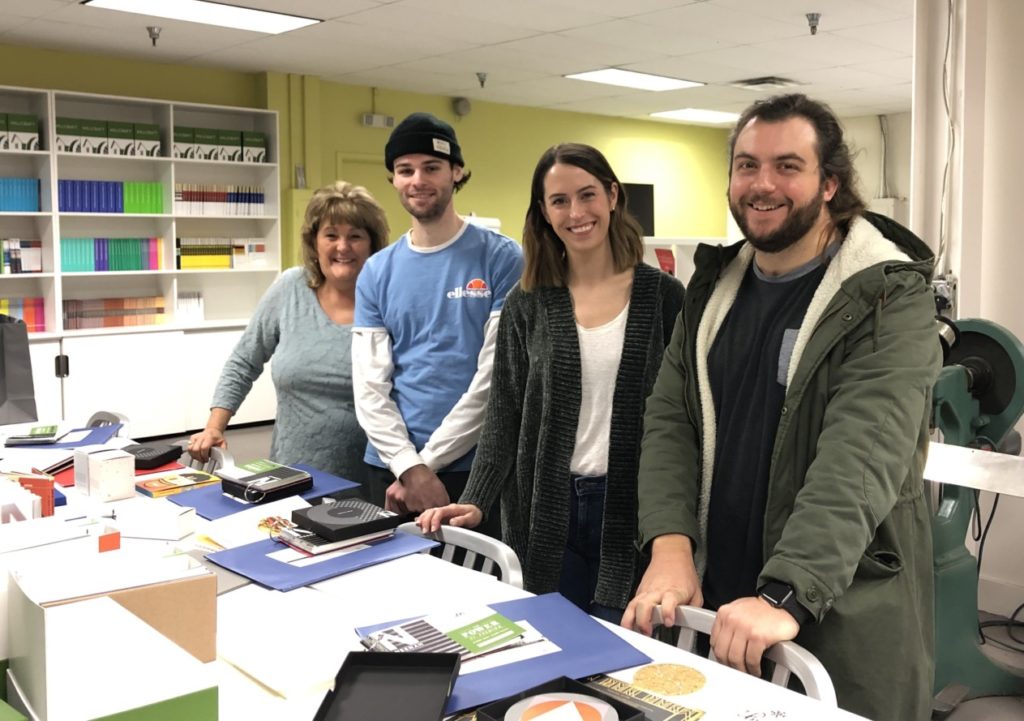As many designers know, making time for exploration and education is an important part of the creative process. But between deadlines, client meetings and projects, it can be challenging for designers to find time to leave the office for lunch let alone for professional development. But that’s all the more reason to schedule time for it. And that’s exactly what a group of in-house designers at 96 Octane did recently.
A small group of creatives from Progressive’s in-house agency joined us in the Cleveland Design Center for a hands-on session of paper exploration. The team got to experience the paper specification and production sample process first hand. The Cleveland Design Center is a 1600 sq. ft. space, with a floor to ceiling wall full of paper samples that reflects the inventory of papers Millcraft offers.
Going Analog
The hands-on sessions are experiential. Each designer creates a custom crafted paper journal, made to their specifications. The process begins with paper. Designers get a quick refresher in how to navigate a swatch book, noting the major components of the paper specification process: grade, finish, color and basis weight. Designer get to actually touch and feel the different papers, choosing ones that reflect the concept in mind.
Specifying Stock
Once paper is selected and specified, it’s time to consider availability. Is the item in stock locally? This means it’s easy for the printer order and receive delivery, otherwise allow for a few days for paper to arrive from the mill. Visitors to the Design Center can request a copy of Millcraft’s Writing, Text & Cover Stock Guide to insure the papers specified are available and in stock at one of our warehouses.
Once the papers are specified and pulled from sample shelves, it’s onto making dummies. As any print production manager knows, print design requires an extra step in the process to be certain the concept will “work.” That’s where understanding how to use samples and requesting a dummy (plain paper mock-up) comes in. The journals are saddle-stitched, so each sheet of paper equates to four pages. The team at 96 Octane was constructing 24 page + cover journals, so this required six text pages plus cover stock.
Constructing Mock-ups
The team got hands-on, cutting, scoring and folding the covers and text pages. After that, it’s onto bindery. Each journal got two stitches along the spine, then trimming to finished size. For this project, the flat size of the journals are 8 ½” x 11” with a finished size is 5” x 8”.
Exploring Print Samples
Throughout the process, visitors get to experience all the #printspiration on display in our Design Center. Looking at print samples is an important part of the process. It allows the designer to examine a finished piece more thoroughly. This step often provides answers to critical questions during the production process. Visitors get to see and touch projects of all types – from packaging, to invitations, to publications and brand identity. Exploring different production and bindery methods used in real-life projects, under real-life circumstances like budgets and deadlines.
Visit our Design Center
We enjoyed having the team from 96 Octane visit the Design Center, and are working on plans for the next hands-on session with others on their team. And the best part, Millcraft’s Design Centers are open to all designers in the markets we serve. Just ask your Millcraft rep or join us for one of our Open Hours sessions – sign up today!

